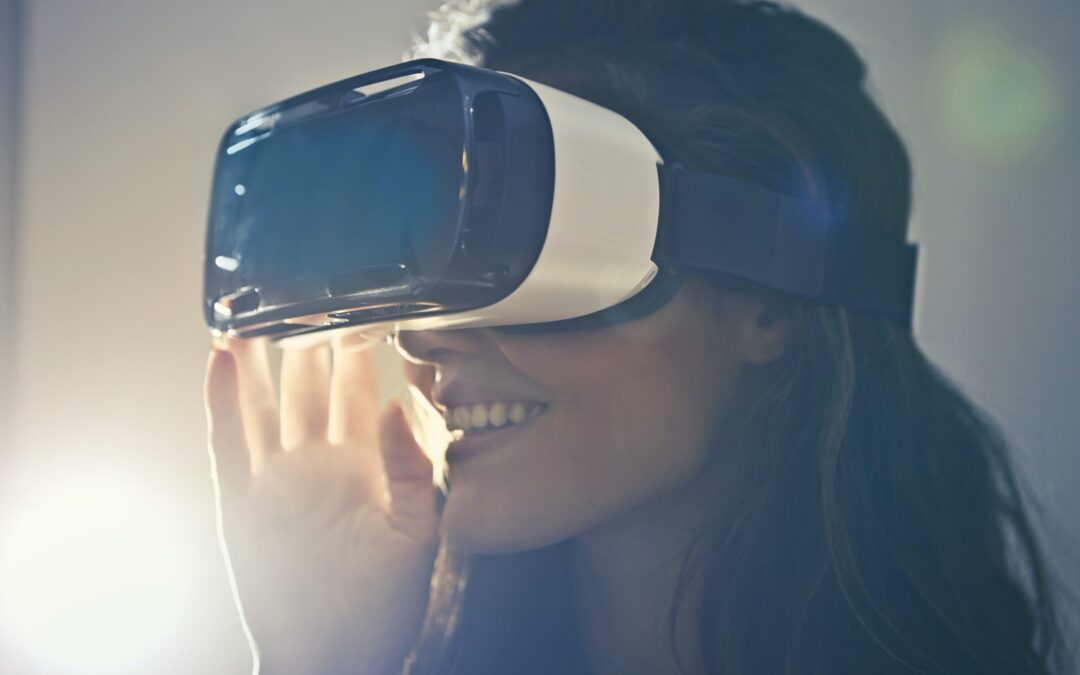There is more to VR (Virtual Reality) than playing life-like games. This fairly new piece of technology is promising a great change in the field of mental health.
Can VR reshape the healthcare system and introduce an innovative way of improving our well-being?
So far, using VR in healthcare is showing positive outcomes.
Personal preference for VR aside, if there is a new method that can help with mental health disorders, people should be open to this opportunity. Since VR treatments are expanding and showing satisfactory results, staying oblivious to this phenomenon is no longer an option.
With that in mind, let’s see what kind of impact is VR making and what are the predictions for the future of mental health treatments.
The Introduction of Virtual Reality in Mental Health Treatments
VR therapy isn’t as new as we might presume. In fact, VR has been applied as a mental health tool since the 1990s. In 1997, researchers from Georgia Tech took the advantage of emerging virtual reality technology to conduct exposure therapy with veterans suffering from PTSD.
What sparked this idea of connecting exposure therapy with VR?
As explained in Bravemind: Using Virtual Reality to Treat PTSD,
“Exposure therapy is an ideal match with VR. You can place people in provocative environments and systematically control the stimulus presentation. In some sense, it’s the perfect application because we can take evidence-based treatments and use it as a tool to amplify the effect of the treatment.”
That is when the spark was lit and the positive effects of VR could not be unnoticed. This was only the beginning of experimenting with the application of virtual reality in psychological treatments.
The research, studies, and the use of VR continued. Future studies have shown that VR helps with the treatment of mental health conditions such as phobias, anxiety, and depression.
VR has already been used for treating numerous mental or neurological disorders. The most notable therapies and diagnosis have been achieved for the following:
- Post-Traumatic Stress Disorder (PTSD)
- Phobias
- Anxiety disorders
- Chronic pain management
- Labor and delivery
- Schizophrenia
- Paranoia
The question that might puzzle you is why now? If VR has been used for therapy two decades ago, what makes it “new” now?
The answer is simple: Affordability and proven outcomes.
Up until recently, VR has been an expensive and unreachable tech tool that only researchers and ambitious psychologists could get their hands on. With companies and startups launching VR solutions like Psious and Limbix, this is no longer an unattainable technology.
In addition, innovative technologies must be thoroughly tested before accepted as a suitable treatment tool for wide masses. But today, there are no more doubts about the helpful nature of VR technology.
5 Ways VR Is Transforming Mental Health
What can we expect from virtual reality? Will it change mental health care as we know it today? The truth is that the change is already happening.
Virtual reality therapy is the next big thing for many reasons. But let’s state a few key ways in which VR is transforming mental health.
1. Faster and precise diagnosis
The ability to put different patients in the same scenario helps therapists and researchers to get objective and precise results. Furthermore, with VR, clinicians can put patients in everyday situations that could help with the diagnosis.
The variety of methods and ways of testing symptoms has been increased thanks to VR. Tests and environments that used to be out of reach are now a realistic possibility with virtual reality technology.
2. More affordable mental health treatments
With the decreasing price of VR technology, self-guided VR therapies could soon be put next to self-help books. People who don’t have the time or money for tailored treatments could get help through VR therapy.
Imagine this. You’ve finished another great TutorDoctor tutoring session. Now, it is time for therapy. You don’t need to drive for miles to get to the psychiatrist’s office. You simply take your headset and you’re there.
With time becoming a lacking essence, VR will become both a time-saving and cost-effective solution.
3. High-quality treatment for more people
The best of the best therapists aren’t available to everyone. The cost and different locations can create a wall between the high-quality treatment and the patient that needs help. VR therapy can break that wall.
Experienced psychologists can make their services more available. What’s more, VR provides a more realistic therapy compared to video consultations. Virtual reality therapy can connect people with unusual mental health diagnoses to specific experts who can provide them with appropriate therapy.
4. Activation of all senses
VR content activates more than just visual senses. Other sensory stimuli can turn the therapy into a full experience. Multisensory VR systems can create a realistic environment that further enhances exposure therapy.
5. A way to promote the importance of mental health
Not too long ago mental health was a taboo. Going to therapy was a secretive process while some, led by intimidation and embarrassment, accepted to coexist with their disorder without ever asking for help.
Luckily, things are looking up. Mental health is finally a recurring topic. And VR can help with further acceptance of taking care of our well-being.
The engaging aspect of VR technology can attract and retain more patients in therapy.
Final Thoughts
VR-enabled therapy is slowly but surely making its way to our homes. The opportunity to get high-quality help to people around the world is something we can’t turn away from.
Every chance we get to work on mental health and make improvements in this field needs to be accepted with open arms. So, let’s give VR a try.
Author’s bio
Jessica Fender is a copywriter and blogger at EssaySupply with a background in marketing and sales. She enjoys sharing her experience with like-minded professionals who aim to provide customers with high-quality services.
Featured on Forbes, AMA Boston, HR Exchange Network

